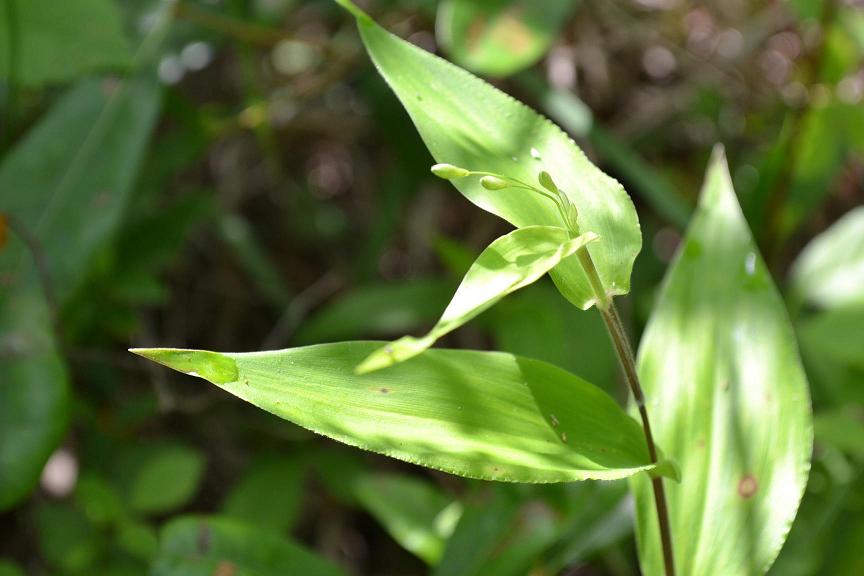Difference between revisions of "Dichanthelium boscii"
Ruthstetler (talk | contribs) (→Description) |
Ruthstetler (talk | contribs) |
||
| Line 28: | Line 28: | ||
==Ecology== | ==Ecology== | ||
===Habitat=== <!--Natural communities, human disturbed habitats, topography, hydrology, soils, light, fire regime requirements for removal of competition, etc.--> | ===Habitat=== <!--Natural communities, human disturbed habitats, topography, hydrology, soils, light, fire regime requirements for removal of competition, etc.--> | ||
| + | ''D. boscii'' occurs in a range of light conditions, from shady to open sun, and a variety of soil types, from moist loam, to wet clayey soil, dry rocky soil, moist sandy humus, loose sand, and dry soil (FSU Herbarium). It can be found in natural communities such as mixed broadleaf woodlands, oak-hickory uplands, mixed woodland ravines, and river bluffs (FSU Herbarium). In addition, it appears in disturbed habitat like power line corridors (FSU Herbarium). | ||
===Phenology=== <!--Timing off flowering, fruiting, seed dispersal, and environmental triggers. Cite PanFlora website if appropriate: http://www.gilnelson.com/PanFlora/ --> | ===Phenology=== <!--Timing off flowering, fruiting, seed dispersal, and environmental triggers. Cite PanFlora website if appropriate: http://www.gilnelson.com/PanFlora/ --> | ||
Revision as of 13:56, 13 July 2015
| Dichanthelium boscii | |
|---|---|

| |
| Photo taken by Kevin Robertson | |
| Scientific classification | |
| Kingdom: | Plantae |
| Division: | Magnoliophyta - Flowering plants |
| Class: | Liliopsida – Monocotyledons |
| Order: | Cyperales |
| Family: | Poaceae ⁄ Gramineae |
| Genus: | Dichanthelium |
| Species: | D. boscii |
| Binomial name | |
| Dichanthelium boscii (Poir.) Gould & C.A. Clark | |

| |
| Natural range of Dichanthelium boscii from USDA NRCS Plants Database. | |
Contents
Description
Common Name: Bosc's panicgrass
Synonym Name: Panicum boscii Poir.
Dichanthelium boscii is a perennial graminoid.
Distribution
Ecology
Habitat
D. boscii occurs in a range of light conditions, from shady to open sun, and a variety of soil types, from moist loam, to wet clayey soil, dry rocky soil, moist sandy humus, loose sand, and dry soil (FSU Herbarium). It can be found in natural communities such as mixed broadleaf woodlands, oak-hickory uplands, mixed woodland ravines, and river bluffs (FSU Herbarium). In addition, it appears in disturbed habitat like power line corridors (FSU Herbarium).
Phenology
This species has been observed flowering in April, May, July, and August; and fruiting has been observed in May, August, and October (FSU Herbarium).
Seed dispersal
Seed bank and germination
Fire ecology
D. boscii has been found in recently burned areas (FSU Herbarium).
Pollination
Use by animals
Diseases and parasites
Conservation and Management
Cultivation and restoration
Photo Gallery
References and notes
Florida State University Robert K. Godfrey Herbarium database. URL: http://herbarium.bio.fsu.edu. Last accessed: June 2014.
Collectors: Harry E. Ahles, Loran C. Anderson, Wilson Baker, D.J. Banks, W.T. Batson, Jr., Raymond Athey, Max Brown, Stanley A. Cain, W. C. Coker, George R. Cooley, R.F. Doren, J. A. Duke, Richard J. Eaton, Donna Marie Eggeres, Patricia Elliot, Mark A. Garland, R.K. Godfrey, Harry Heady, N.C. Henderson, Ann F. Johnson, Lisa Keppner, A.C. Koelling, R. Kral, H. Kurz, S.W. Leonard, R. L. Lazor, Robert F. Martin, J. B. Nelson, R. A. Norris, P. L. Redfearn, John W. Thieret, R. F. Thorne, John David Tobe, and L. J. Uttal.
States and Counties: Florida: Calhoun, Gadsden, Jackson, Jefferson, Leon, Levy, Liberty, and Washington. Georgia: Brooks and Grady. South Carolina: Fairfield and Reidville. Kentucky: Lyon. Virginia: Allegany, Giles, Montgomery, Roanoke, and Tazewell. North Carolina: Alamance, Avery, Cabarrus, and Granville. Indiana: Cass. Pennsylvania: Monroe and Northampton. Arkansas: Newton. Alabama: Lee. Louisana: Caldwell, Iberia, and Ouachita. Missouri: Ripley.